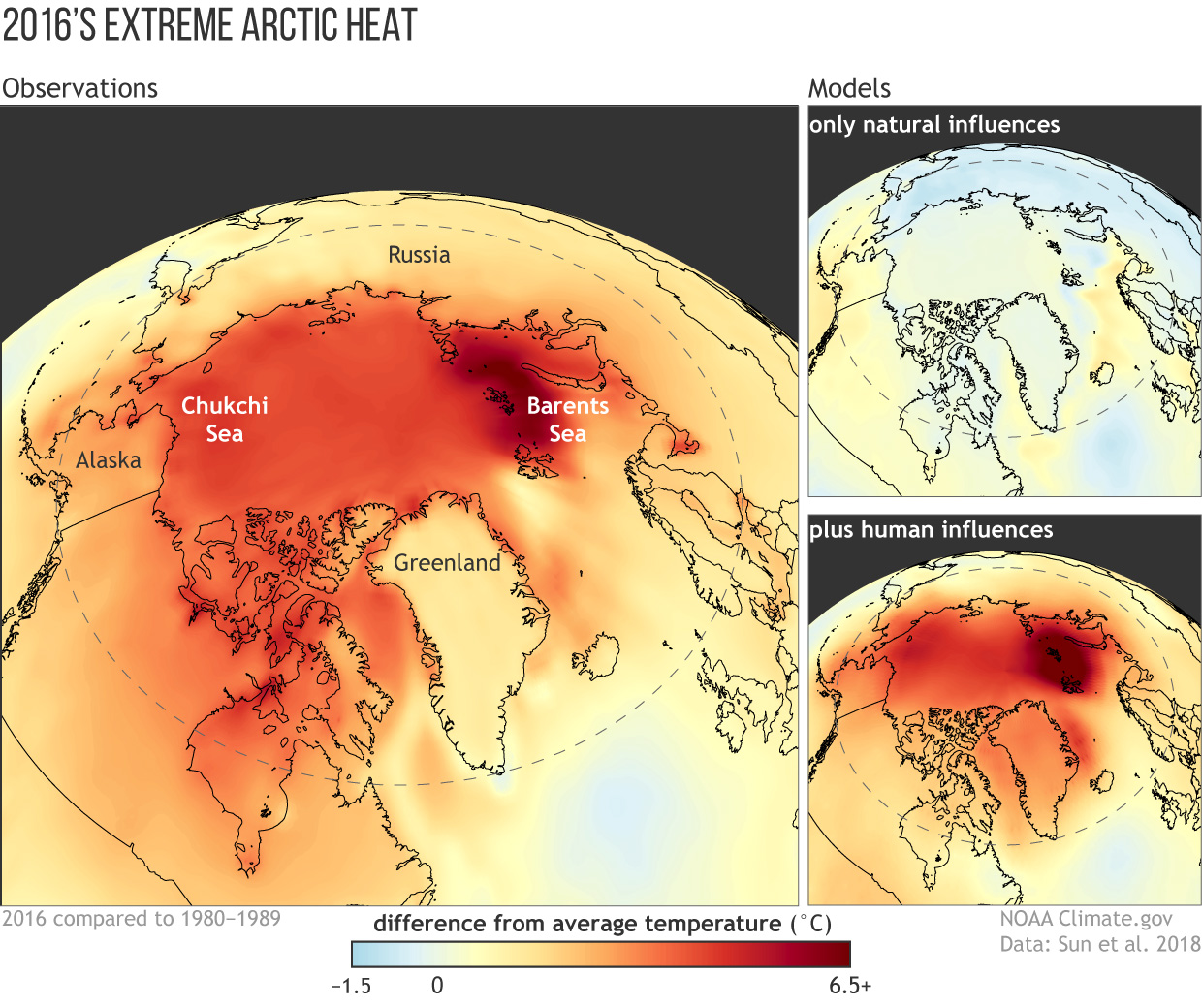Arctic Heat
Arctic Heat is an Open Science experiment that is strengthening collaboration among research laboratories and the National Weather Service in Alaska by developing new real-time observing capabilities. This is being done to facilitate the timely delivery of observations for use in weather and sea-ice forecasts, to make data readily accessible for model and reanalysis assimilation, and to support ongoing research activities across disciplines.
The Chukchi Sea and other seasonally ice-covered marginal seas are among the most challenging regions to study in the world. Instruments can easily wreck in the water column and sea ice is not stable enough to deploy equipment on. Ships and satellites only provide limited access to this domain. The lack of observations hampers sea ice and weather forecast services and impedes the progress of research in the region. The exchange of solar energy through the Chukchi Sea—especially in the zone between the sea surface and about 30 meters depth—is one of the prime regulators of the Arctic climate, its sea ice cover, and its ecosystems.
This project aims to bridge the upper ocean observation gap in the Arctic marginal seas through the deployment of innovative new autonomous floats and other near real-time weather and ocean-sensing systems. These systems and the specially-modified NOAA Twin Otter aircraft promote the synthesis of the ocean and atmospheric data that span the range from satellite remote-sensing to sub-surface oceanographic moorings. The flexibility and endurance of the Twin Otter means that autonomous floats can be launched and data rapidly collected over a wide area, when and where needed.
The scientific objectives of the Arctic Heat experiment include monitoring rates of upper ocean temperature change and water mass transformation over entire seasons, from the time the sea ice begins to retreat in the spring through freeze-up in the autumn, and even over the winter. With this data we will also be able to better interpret the relationship between satellite- and aircraft-based radiometer measurements of the ocean's surface temperature (SST) and temperatures at depth detected by profiling floats and expendable probes. Real-time data will also be assimilated in weather and sea-ice forecast models. In addition, a number of engineering research and development studies designed to explore the capabilities of the ALAMO float will be carried out.
For more information, please visit the Arctic Heat website

Partners/Collaborators
This is a joint project with NOAA Pacific Marine Environmental Laboratory, University of Washington, Joint Institute for the Study of the Atmosphere and Ocean, National Weather Service Sea Ice Program, and the NOAA Earth System Research Laboratory.

